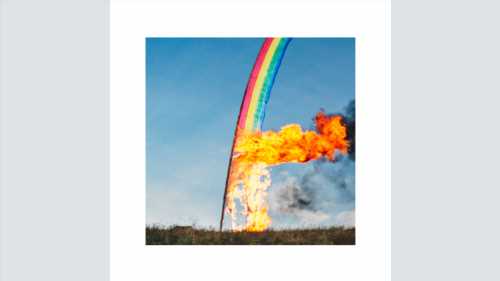Those with long memories can recall when the otherworldly Icelandic combo Sigur Ros’ music first began filtering over to these shores at the turn of this century — maybe on Napster or Limewire after Radiohead’s Thom Yorke began mentioning them in interviews, or on a burned CD from a friend who had one of their hard-to-find-even-in-metropolises imports.
Hearing them for the first time was like taking a voyage to a different musical planet, guided by a vocalist named Jonsi who sang in both Icelandic and an invented language over lush, towering, majestic music that evoked National Geographic landscapes and summoned purple prose from critics even more pretentious than the line you just read. While there were certainly influences — Cocteau Twins, Eno, electronic music and film soundtracks — Sigur Ros were like absolutely no one else, and their sound (and lineup) evolved over the early ‘00s and beyond, incorporating orchestras on one album, rock-centric structures on the next, ambient on the one after, while still remaining unmistakably them.
The group reached a commercial peak of sorts with 2005’s “Takk” and its “single,” “Hoppipola,” which has gorgeous melodies and a gloriously triumphant coda, and could have been a monumental film song if it’d had a more conventional vocal, let alone lyrics in a known language — not that their unconventional style has held them back in that category, as their music has been used in dozens of films and television specials (including, perfectly, the BBC’s eye-popping 2006 “Planet Earth” nature series).
“Atta” is the group’s first album in ten years, but within the first minute you’re immediately drowning in one of the most glorious Sigur Ros soundbaths to date — a soaring, swelling orchestra with a distant choir-like sound and a backward, sped-up voice flitting wordlessly. Anyone who’s pined for a new album from the group gets exactly what they were hoping for, right there — and it goes on for nearly another hour across ten songs, although it’s often hard to tell where, for example, “Skel” ends and “Kettur” begins: The group intended the album to be heard in one long stream (although the tracks are separated on streaming services), and it ebbs and flows like a time-lapse nature video of seasons changing or the sun rising and falling or the tide going in and out on a cloud-speckled beach. (Despite its ethereal sound, the album’s cover artwork — a rainbow on fire, an unfortunately timed image that could be misinterpreted during Pride Month — suggests an undercurrent of violence that only occasionally surfaces on the record.)
Nor are you really sure when it’s over — but like the group’s best work, its amorphous and vaguely defined nature makes it something you can explore again and again and still find something you hadn’t noticed.
Read More About:
Source: Read Full Article
